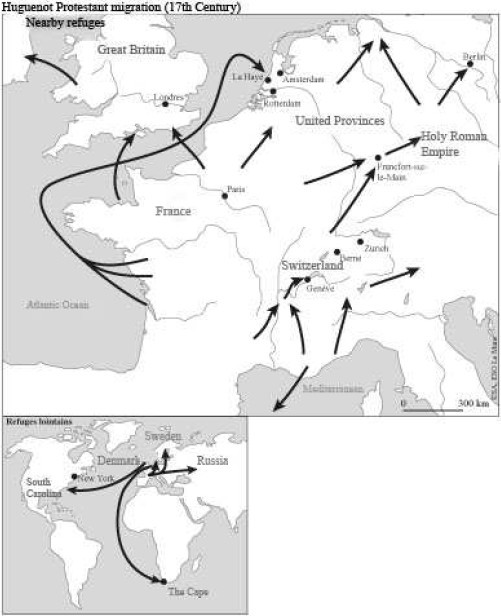A royal decision
In 1685, at the height of his political power, King Louis XIV[1] signed an edict whereby he revoked an earlier edict promulgated by his grand-father Henry IV[2] . The Edict of Nantes[3] was declared « perpetual and irrevocable »
but everybody knew that such a formula is no guarantee in so far as any monarch is legally entitled to go back on a predecessor's decision. As early as the 18th century, the revocation of the Edict of Nantes (la Révocation) was, recognised by many, including a current within French Catholicism, as a human, economic and political catastrophe. A human catastrophe for the religious minority of Protestants struck by their government's exercise in social control, it was an economic and political catastrophe for France. Indeed, it pushed into the arms of her European enemies an often well qualified population. This victory of Catholicism, royal power's faithful ally is no doubt one of the deep causes of the anticlericalism exhibited in the following century, notably by Voltaire who professed to « crush the infamous thin »
.
France numbered then, according to demographer-historian Pierre Goubert, some 20 million inhabitants. In religious terms, this population broke down into a huge, almost 19 million strong Catholic majority and a little over one million Protestants also known as the Huguenots[4] , or “réformés” for being the direct heirs to the 16th century Reformation movement. While the revocation edict expels the pastors, it expressly forbids their flock to leave the realm ; and yet, between 150 and 200,000 people, no less, will take the road to exile – already, for some, in the few years preceding the Revocation, but mostly, for the others in the 15 years that followed. This migratory flow (1% of the whole French population) will be the most important experienced in Europe in the 17th century.









